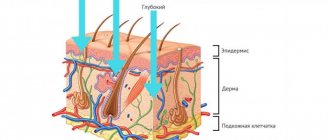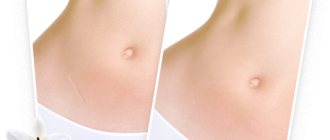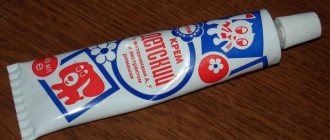Chickenpox is an infectious disease caused by the Varicella Zoster virus. The disease is highly contagious. Transmitted by airborne droplets or contact. A healthy person only needs to interact with a sick person for about 5-10 minutes to catch the virus. Chickenpox in children is most often observed at the age of 4–5 years, when the child’s body is most susceptible to infection. A child up to one year old is protected from the disease by the mother’s antibodies, which are transferred to him during pregnancy and breastfeeding. Children usually tolerate chickenpox quite easily. The incubation period lasts from 5 days to three weeks.
Symptoms of chickenpox in children
The initial manifestations of the disease resemble typical signs of a viral infection and are expressed in:
- sore throat;
- general malaise, weakness, body aches;
- capricious behavior;
- sleep disturbance;
- loss of appetite;
- headache;
- increase in body temperature. The more severe the disease, the higher the thermometer rises. With mild flow, the temperature may remain within normal values or rise slightly.
- A severe form of chickenpox is accompanied by vomiting, and the lymph nodes may become enlarged.
Simultaneously with the rise in temperature, a rash appears on the child’s body, by which chickenpox can be distinguished from other infectious diseases. Rashes with this disease are observed in the vast majority of cases. And even the mildest form is accompanied by a minimal amount of characteristic bubbles.
The rash is first noticed on the body, then on the arms, legs and head. There are no blisters on the feet and palms, but they often appear on mucous membranes: in the mouth, on the tongue and palate, on the genitals and eyes. Small red spots quickly turn into papules that resemble insect bites. Then liquid forms inside them. After the bubble is opened, a crust appears on it. The whole process is accompanied by severe itching, which causes discomfort to the child and sometimes even interferes with proper sleep. If the inflammations are not scratched, they will disappear without a trace soon. Otherwise, scratching may leave small scars on the skin.
It is important to explain to your child that you should not pick off scabs or scratch the inflamed areas, as you can introduce infection into the wounds, which will lead to complications.
The symptoms described above are typical manifestations of chickenpox. Atypical forms come in several types:
- bullous chickenpox with large purulent vesicles;
- hemorrhagic with bloody contents of vesicles;
- gangrenous-necrotic, in which the vesicles are filled with both blood and pus;
- rudimentary, which occurs without a rash and fever, only with typical signs of ARVI.
It is impossible to say for sure how many days chickenpox lasts. The first rash may appear on the first or second day of illness, the last - after a week or a week and a half. Healing of the skin will occur in one to two weeks. If there are complications, the illness may last for several weeks.
After how many days is the child no longer contagious?
The incubation period in children is 13-17 days, with an average of 14 days. The standard interval from the moment the virus enters the human body until the first symptoms appear is 7-21 days, which is typical for patients over the age of 30 years.
The minimum incubation period for persons infected with Varicella Zoster (varicella zoster virus) is 7 days, the maximum is 23 days. By the end of this period (1-3 days before the prodromal period), the sick person becomes a source of infection.
The child is contagious:
- From the end of incubation (last 1-3 days).
- During prodromal manifestations (1-2 days).
- The entire period of appearance of the rash on the body (about 9 days) until the crusts fall off.
When a child is no longer infectious to others:
- After the crusts fall off. From the moment the last elements of the rash appear, the child is still a source of infection for about 5 days, and only after the last scab disappears does it cease to be infectious.
- 10-11 days after the first prodromal manifestations.
- After 23-28 days (maximum 33 days) from the moment of infection.
Doctors recommend minimizing the contact of others with a sick child for the maximum period during which he can serve as a source of infection for other children and adults.
Treatment of chickenpox in children
Even with a mild course of the disease, a pediatrician should monitor the child’s condition and prescribe medications. Therefore, a doctor should be called to your home at the first suspicion of chickenpox. A set of measures for this disease usually includes the following.
- A sick baby is isolated so that he does not infect others, since there are some groups of people (pregnant women, elderly people and people with chronic diseases) for whom chickenpox can be extremely dangerous.
- Strict bed rest is prescribed for severe cases of the disease or limit physical activity if the disease is mild.
- When treating chickenpox, if no complications are observed, do not use antiviral drugs and antibiotics.
- The child should be offered to drink a lot: clean water, tea, fruit drinks.
- The diet should be as light as possible: soups, steamed fish and meat, pureed fruits and vegetables (if there is a rash on the oral mucosa).
- Suitable drugs based on ibuprofen and paracetamol are used as antipyretics.
- To treat the rash, antiseptics are used: fucorcin, brilliant green, hydrogen peroxide, potassium permanganate, zinc-based products.
- If the itching is severe, your doctor may prescribe antihistamines.
- If a rash forms in the mouth, the pediatrician will recommend rinsing with furatsilin and herbal decoctions. Painful wounds can be lubricated with anesthetic gels.
- If there are scars left after chickenpox, they are lubricated with special products prescribed by the doctor.
On what day is the certificate issued?
The certificate is issued after the child has recovered. Only a doctor can accurately determine the length of time a patient will stay at home. On average, a child is discharged 17-18 days after the onset of the disease.
Children with chickenpox rarely stay at home for more than 21 days. Doctors do not recommend staying isolated from other children any less. If complications develop, parents may have their sick leave extended for a longer period of time.
Quarantine measures
Quarantine is one of the most important measures to prevent the spread of infection. Herpes type 3 is a highly contagious infection, so it is very important to protect children from contact with the patient. If a sick child is detected, he is isolated at home. It is recommended to observe bed rest only at high temperatures, and during the normal course of the disease, neither hospitalization nor any special treatment measures are required.
If a patient is detected, the medical employee of the institution must transfer the data to the clinic. When the diagnosis is confirmed, the children's group is closed, and only the group or class of the sick child is closed - in general, the institution does not stop its work.
The duration of quarantine is three weeks, but if another sick person appears during this time, the quarantine is continued for the same period. During quarantine, the following procedures must be followed:
- examine the skin of healthy children daily to detect the presence of chickenpox;
- measure body temperature;
- carefully record attendance, maintain contact with parents of absent children;
- Children from the quarantine children's group should not communicate with other children to avoid the spread of the disease;
- if possible, organize separate training (in other classrooms) in physical education and music.
During quarantine, sanitary measures are actively carried out in preschool institutions and schools - the premises are ventilated with a draft every half hour. You can increase the break between classes. It is necessary to carry out wet cleaning regularly. The optimal humidity level is from 60 to 80 percent - it helps improve immunity.
It is recommended to disinfect water with ultraviolet light, disinfect all toys, common dishes, exhibits and all places where the infected person could have been. Having discovered a baby with vesicles, a school or kindergarten medical worker should inform parents about suspicion of smallpox and isolate the baby.
Methods of spreading chickenpox
Children come into very close contact with each other, play with the same toys, and even bite each other, so contracting chickenpox will not be particularly difficult.
The route of transmission of the disease is airborne droplets. And accordingly, you can become infected with it through basic contact with a sick person, as well as by inhaling already contaminated air. You can also catch chickenpox after using the patient’s clothes or hygiene items, but this route of infection is very rare, since viral agents are very unstable in the environment.
The causative agent of this pathology is the third generation herpes virus, which can also cause herpes zoster. Therefore, a person with shingles is a potential carrier of chickenpox. It is best for such patients to stay at home for a while to avoid further spread of the disease.
Children's quarantine due to chickenpox
Chickenpox is a disease that can spread rapidly in an ordinary room. Neither tightly closed doors nor flights of stairs will stop her. Literally within a day, the infection can affect all children who attend a children's educational institution. Although chickenpox is not fatal and most often does not cause irreparable harm to the health of children, it is not worth the risk. It is necessary to contact the parents immediately after diagnosis and isolate the sick child.
Mom and dad are obliged to carefully care for a sick baby and follow all the pediatrician’s instructions. Boys or girls who still have fresh rashes should not be taken to kindergarten after chickenpox. The incubation period is 10-12 days after the last rash appears. These days should be spent at home; you should not try to visit public places. As an exception, you can visit relatives if they have immunity to chickenpox.
Doctors allow children to return to the garden after chickenpox only after complete recovery. It is not only dangerous, but also irresponsible to discharge early.
Chickenpox does not go away quickly. Most often, the baby is sick for quite a long time - at least 3 weeks. In preschool educational institutions, a quarantine is usually declared for at least 21 days if several children get sick.
Chickenpox quarantine: how many days do you need to stay at home?
Chicken pox is a disease that is very quickly transmitted from a patient to healthy people; outbreaks of the disease are especially common in places where there are large crowds of people. Taking into account the age group, it can be noted that chickenpox in children develops in kindergartens and schools. Like any disease, chickenpox has several stages of development. Each stage lasts a certain period of time; therefore, there is a quarantine for chickenpox, which must be observed without fail if you do not want to aggravate the patient’s condition and infect healthy people.
Tips after chickenpox
The main recommendations after chickenpox are to restore and strengthen the immune system, namely:
- long walks in the fresh air;
- use of vitamin supplements;
- limiting physical activity;
- medical exemption from preventive vaccines for at least 1 month.
After suffering from chickenpox, the body acquires stable 100% immunity. There are cases of re-infection, but the clinical manifestations of the disease are less pronounced due to the presence of antibodies to chickenpox in the blood.
The danger of violating quarantine
It must be remembered that the immune system of children with chickenpox is very weakened. If a child gets sick with something else in the first two weeks after chickenpox, the consequences for the body can be very serious. Diseases such as arthritis, bronchitis, encephalitis and meningitis are especially difficult for children who have recently had chickenpox.
Doctors will not discharge the baby if they suspect any complications. And if a small patient did not receive proper care and treatment at home, the likelihood of complications will be very high.
Sometimes doctors prescribe special medications for small children that support their immunity. However, medications may not be enough. You need to allow the body to gain strength and recover completely. While in a preschool or educational institution, children communicate a lot, run around, and play, so it is best to return to the team when they can move actively.
You should not come to school without a certificate confirming your complete recovery. Even if parents and the attending physician have given permission to go to school, teachers and health workers at the educational institution are required to make sure that the student does not bring the infection into the classroom.
Chickenpox is a nasty disease that can keep little ones indoors for weeks. But the main thing is that the children are fully cured and not discharged early.
Treatment
If pathology is diagnosed, then treatment of chickenpox in children should be symptomatic. Young patients are given antipyretics if the temperature exceeds 38.5. Medicines that reduce itching are also prescribed, for example, antihistamines such as diazolin, suprastin and some others (as prescribed by a doctor).
In addition, the blisters are lubricated with a solution of brilliant green, due to which they dry out, itch less and heal faster. It would be correct to use drugs that enhance immunity to treat chickenpox. But in adult patients, chickenpox, a type of herpes virus, is treated with Acyclovir.










